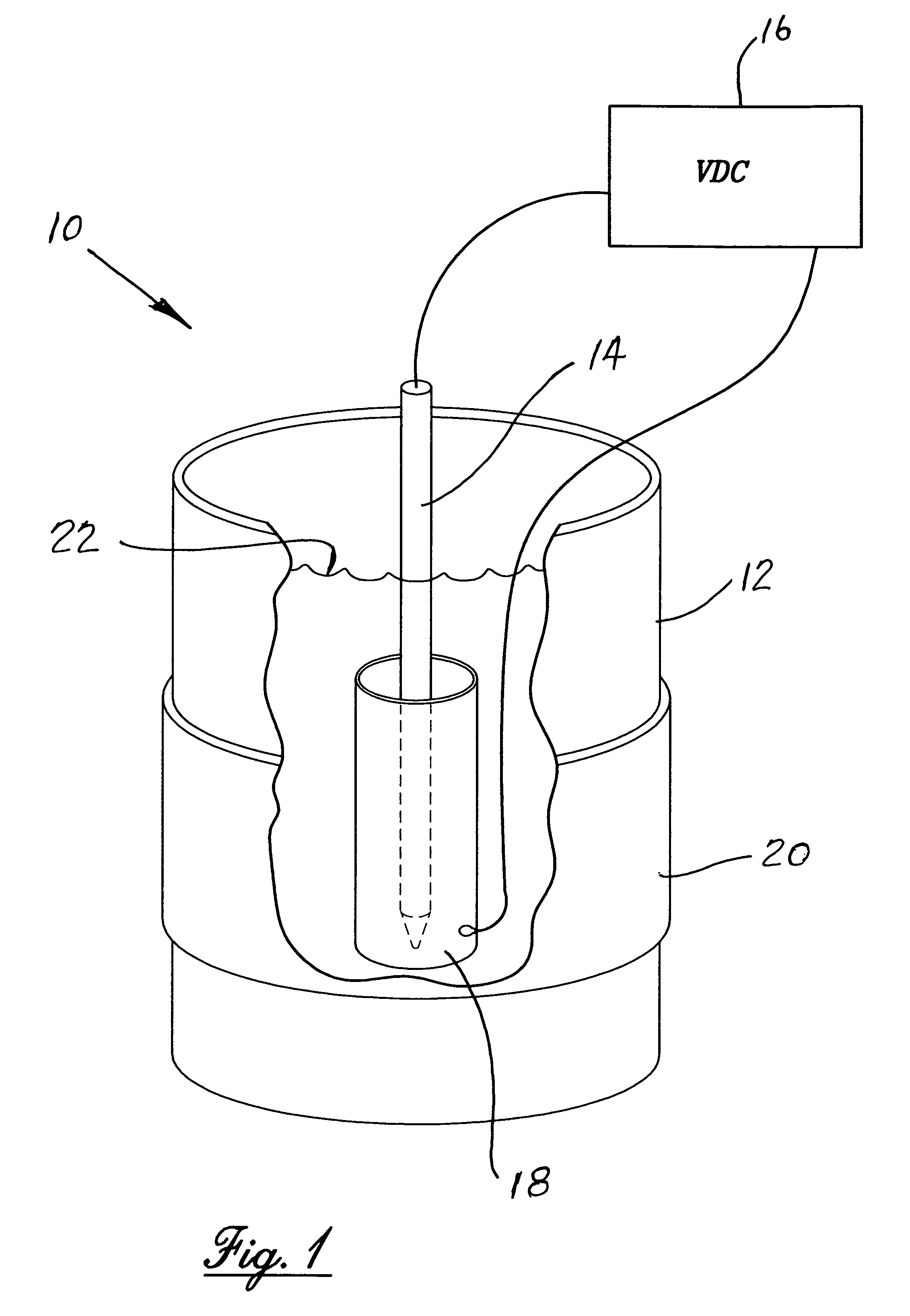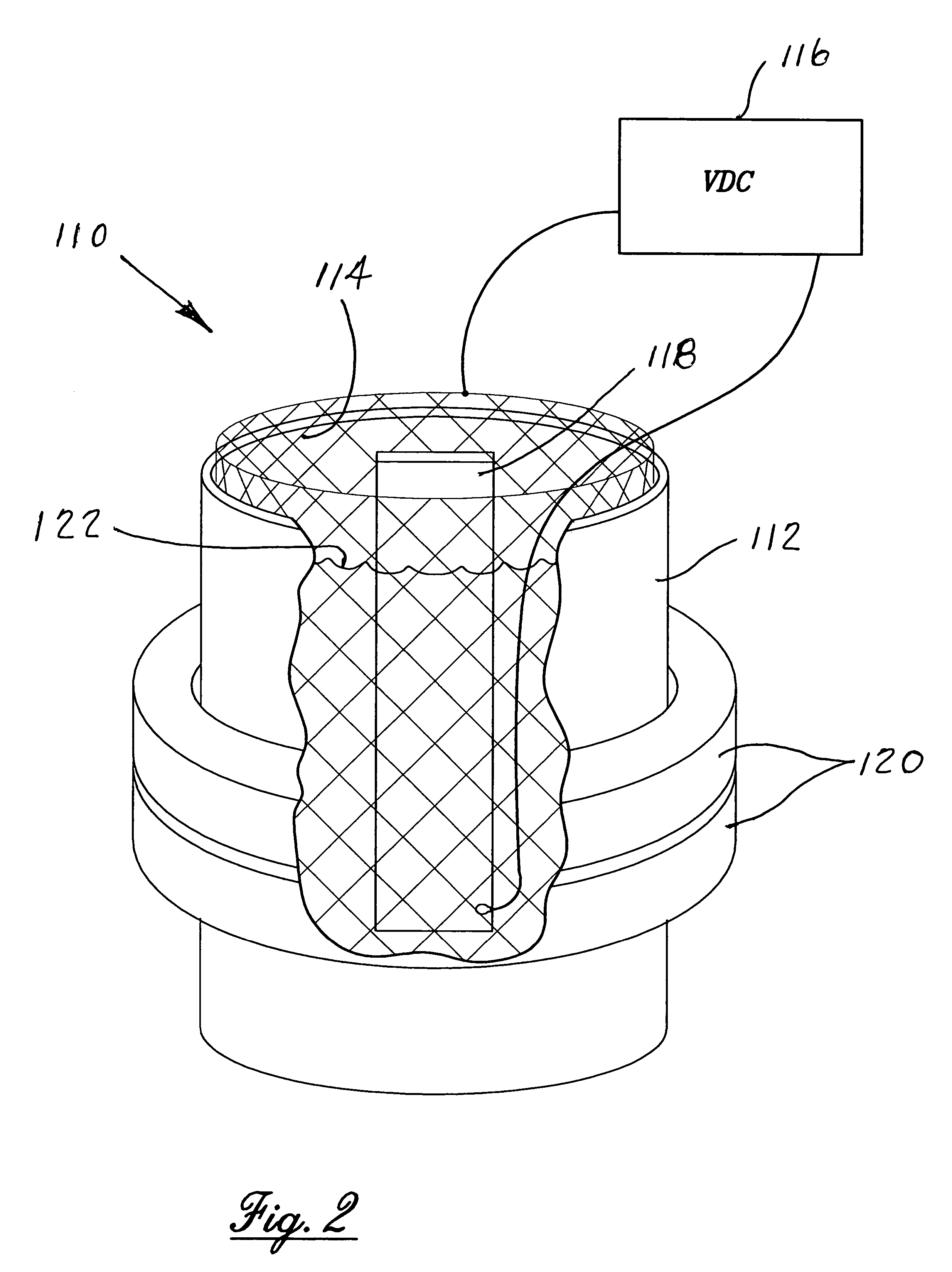Apparatus and method for enhancing electropolishing utilizing magnetic fields
a magnetic field and apparatus technology, applied in the field of electropolishing, can solve the problem that no one can exclude the possibility, and achieve the effects of improving the corrosion resistance of electropolished surfaces, improving surface smoothness, and superior corrosion resistan
- Summary
- Abstract
- Description
- Claims
- Application Information
AI Technical Summary
Benefits of technology
Problems solved by technology
Method used
Image
Examples
Embodiment Construction
[0017]The following detailed description is of the best presently contemplated mode of carrying out the invention. The description is not intended in a limiting sense, and is made solely for the purpose of illustrating the general principles of the invention. The various features and advantages of the present invention may be more readily understood with reference to the following detailed description taken in conjunction with the accompanying drawings.
[0018]Referring now to the drawings in detail, where like numerals refer to like parts or elements, there is shown in FIG. 1 an electrolysis cell 10. The cell 10 is comprised of a cylindrically shaped vessel 12 within which a cathode 14 extends downward along a vertical axis at the approximate center. The cathode 14 is connected by a wire to a voltage source 16 that can produce a desired level of dc voltage. The voltage source 16 is also connected to the work piece anode 18 at a point distant from the point of voltage connection to th...
PUM
| Property | Measurement | Unit |
|---|---|---|
| diameter | aaaaa | aaaaa |
| diameter | aaaaa | aaaaa |
| magnetic field | aaaaa | aaaaa |
Abstract
Description
Claims
Application Information
 Login to View More
Login to View More - R&D
- Intellectual Property
- Life Sciences
- Materials
- Tech Scout
- Unparalleled Data Quality
- Higher Quality Content
- 60% Fewer Hallucinations
Browse by: Latest US Patents, China's latest patents, Technical Efficacy Thesaurus, Application Domain, Technology Topic, Popular Technical Reports.
© 2025 PatSnap. All rights reserved.Legal|Privacy policy|Modern Slavery Act Transparency Statement|Sitemap|About US| Contact US: help@patsnap.com



